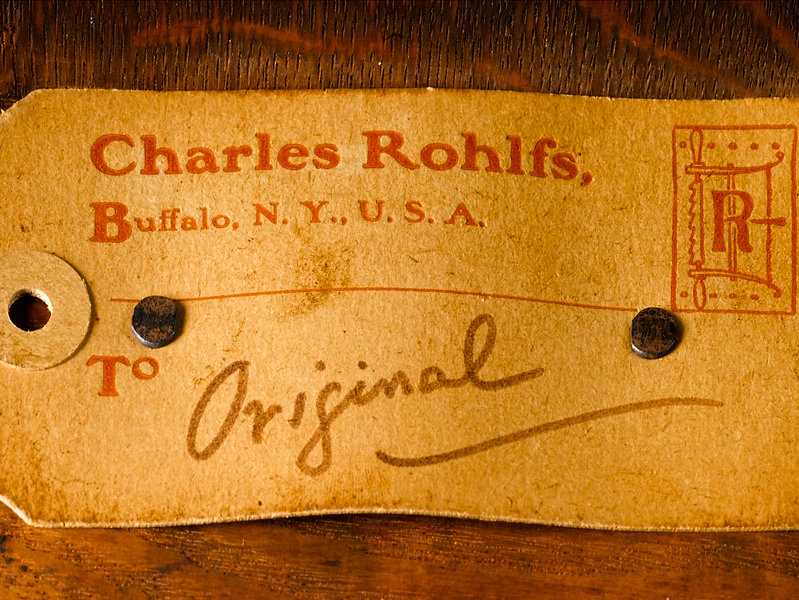The Milwaukee Art Museum (MAM) opens two new shows simultaneously Saturday, June 6: "The Artistic Furniture of Charles Rohlfs" and "The Eight and American Modernism."
MAM's is the first major showing of the furniture and decorative arts by the Buffalo, N.Y.-based designer (1853-1936), and brings together more than 40 pieces from 10 museums and private collections -- many of which haven't been seen together for more than 50 years.
The exhibit is a chronological journey through Rohlfs' life as a first a patternmaker, then a cast-iron stove designer, an actor and, finally in his 40s, a furniture maker. His reputation as an "artist" would come later.
Rohlfs wasn't inhibited by precedent and loathed any sort of label that might typecast his too strictly. Although his style borrowed elements from the arts and crafts and art nouveau movements, he denounced their artificiality and presented his work on his own terms, preferring only the phrases "artistic furniture" or "The Rohlfs Style" in critical reviews of his work.
And it was unique; so much so that his early 20th century attempts to mass-produce his pieces for sale at Marshall Field & Co. were largely unsuccessful, despite the beauty of the works. They were simply too unique for commercial taste. They were truly pieces of art.
As a result, much of his work, on some of which he collaborated on with his wife, mystery novelist Anna Katharine Green, ended up in his home. Photos of his ornately decorated living spaces accompany his works within MAM's galleries.
Rohlfs' tall, slender oak chairs don't exactly invite relaxation, but they are standouts in the collection. As an artist, he paid heightened attention to his medium and often drew inspiration from the hard woods with which he worked. The backrest of his "desk chair," for example, incorporates a carved out section designed to resemble a cross section of oak's DNA under a microscope, a study Rohlf practiced frequently as muse.
"He was willing to try almost anything with furniture ... that trained cabinetmakers would never do," explains Joseph Cunningham, author of "The Artistic Furniture of Charles Rohlfs," and the lead curator of the retrospective.
Venturing on to "The Eight and American Modernism," switches gears into galleries hung with more than 80 paintings by the group of American artists known as "The Eight" -- Arthur B. Davies, William Glackens, Robert Henri, Ernest Lawson, George Luks, Maurice B. Prendergast, Evertt Shinn and John Sloan.
What brought these extremely diverse artists together was the notion of "American realism" and the exploration of modern individualism. As former journalists, many of them saw art as another means of discovering and telling truth about America's urban environment. It was real, it was dark and gritty, and it was something the critics not only had never seen before, but also something for which they didn't have a name or a label.
Most importantly, says curator Elizabeth Kennedy, "The Eight gave individualism to other painters to paint what they wanted, and how they wanted."
The MAM exhibition revisits these artists more than a century after their only group showing at Macbeth Gallery in New York in 1908.
Both "The Artistic Furniture of Charles Rohlfs" and "The Eight and American Modernism" are on exhibit at the Milwaukee Art Museum through Aug. 23.
OnMilwaukee.com staff writer Julie Lawrence grew up in Wauwatosa and has lived her whole life in the Milwaukee area.
As any “word nerd” can attest, you never know when inspiration will strike, so from a very early age Julie has rarely been seen sans pen and little notebook. At the University of Wisconsin-Milwaukee it seemed only natural that she major in journalism. When OnMilwaukee.com offered her an avenue to combine her writing and the city she knows and loves in late 2004, she knew it was meant to be. Around the office, she answers to a plethora of nicknames, including “Lar,” (short for “Larry,” which is short for “Lawrence”) as well as the mysteriously-sourced “Bill Murray.”







